Dry riverbed landscaping is an extraordinary way to transform your outdoor space into a stunning oasis that captures the essence of nature’s majestic rivers while bringing a unique touch of tranquility and elegance to your surroundings. Whether you have a large garden or a compact backyard, this innovative landscaping technique allows you to harness the power of nature’s artistry, creating a visually striking focal point that is sure to captivate anyone who sets foot in your sanctuary.
Get ready to embrace the harmony of stones, the artistry of flowing water, and the serenity of lush vegetation as we delve into the world of dry riverbed landscaping. Here’s a step-by-step guide to help you make a riverbed landscape.
#1. Plan and Design
 Source: EatHappyProject
Source: EatHappyProject
- Determine the scale and size of your riverbed landscape.
- Sketch a rough design of how you want your riverbed to flow through the landscape, including curves, bends, and tributaries.
#2. Gather Materials
 Source: Backyard Boss
Source: Backyard Boss
- Rocks and stones in various sizes.
- Sand or fine gravel.
- A liner or plastic sheeting (optional, depending on the scale of your project).
- Plants and foliage (optional, to add realism).
#3. Prepare the Area
 Source: Pinterest
Source: Pinterest
- Clear the area where you’ll create your riverbed landscape.
- Remove any grass, weeds, or debris from the surface.
#4. Shape the Landscape
 Source: The Family Handyman
Source: The Family Handyman
- Use a shovel or landscaping tools to shape the land according to your design.
- Create elevated areas, slopes, and depressions to mimic a natural terrain.
- Consider adding some small hills or mounds to add visual interest.
#5. Lay the Liner
 Source: Shady Grove Landscape Company
Source: Shady Grove Landscape Company
- If you want to prevent water from seeping into the ground, lay a liner or plastic sheeting in the area you designated for the riverbed.
- Cut the liner to fit the shape of your riverbed and secure it to the ground using landscape stakes or rocks.
#6. Arrange Rocks and Stones
 Source: Frontier Landscaping
Source: Frontier Landscaping
- Start by placing larger rocks and boulders along the edges of the riverbed.
- Gradually add smaller rocks and stones toward the center, creating a natural-looking slope and riverbank.
- Consider arranging the rocks to create mini waterfalls, rapids, or other features you desire.
#7. Create Texture
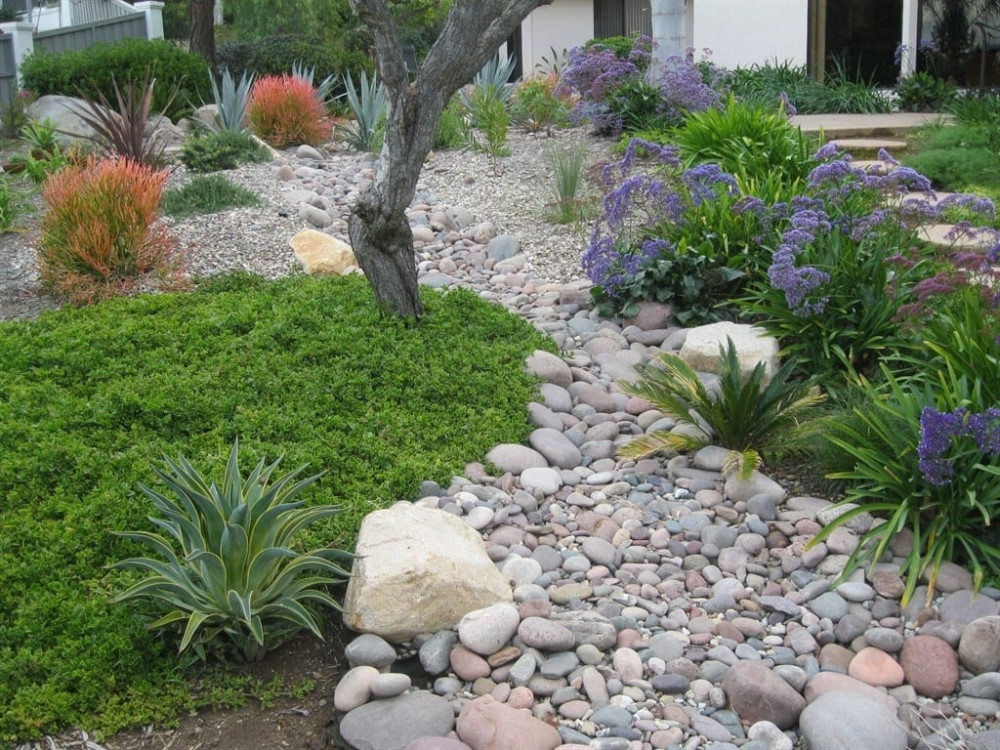 Source: KG Landscape
Source: KG Landscape
- Spread a layer of sand or fine gravel along the riverbed.
- Use a rake or your hands to distribute the sand evenly and create a textured surface.
#8. Add Vegetation
 Source: The Little Digger Company
Source: The Little Digger Company
- Plant small trees, shrubs, grasses, or other foliage around the riverbed to enhance the natural look.
- Choose plants that are suitable for your climate and the scale of your landscape.
#9. Finishing Touches
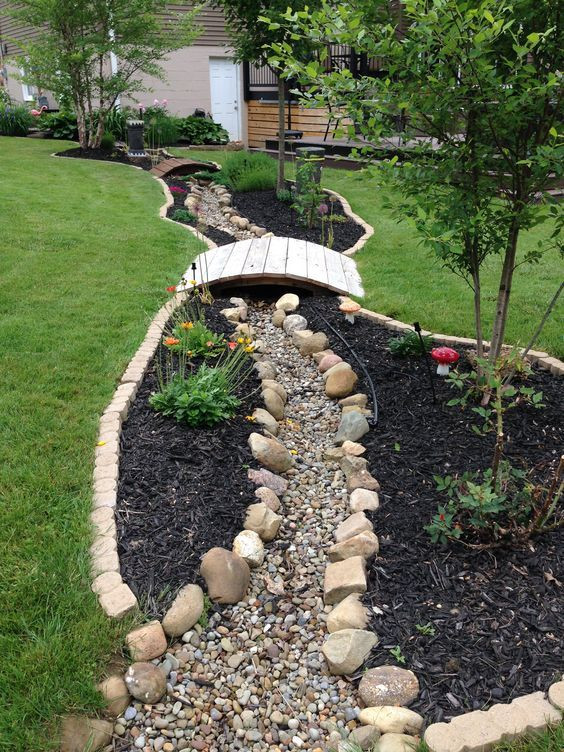 Source: Pinterest
Source: Pinterest
- Place decorative elements like driftwood, pebbles, or moss to add realism and detail.
- Consider adding small figurines or wildlife models to bring life to your riverbed landscape.
#10. Maintenance
 Source: Houzz
Source: Houzz
- Regularly remove debris, fallen leaves, or any unwanted vegetation from the riverbed.
- Check the riverbed after heavy rainfall or watering to ensure the rocks and stones haven’t shifted.
#11. Some Ideas
 Source: The Family Handyman
Source: The Family Handyman
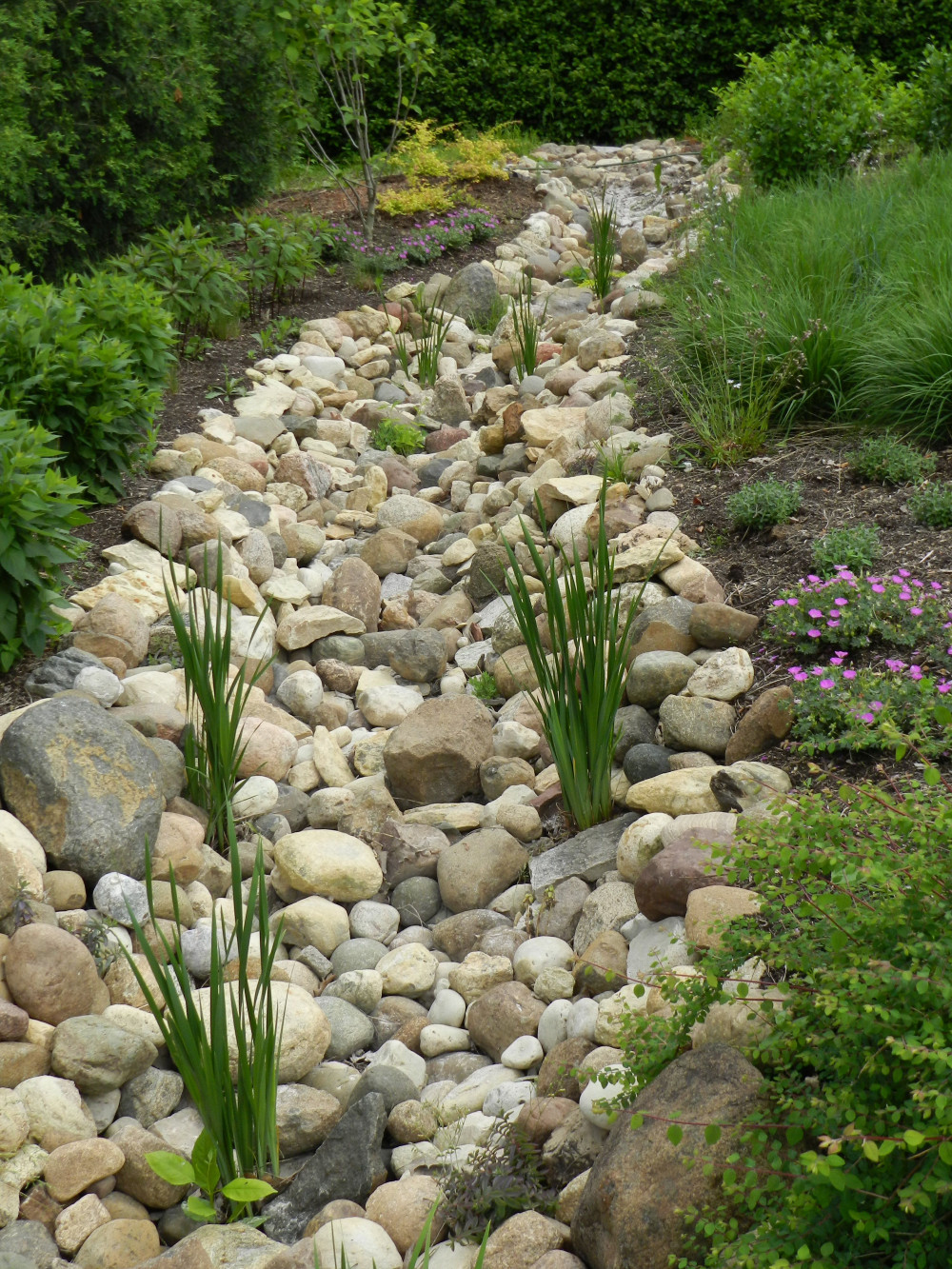 Source: Sellata
Source: Sellata
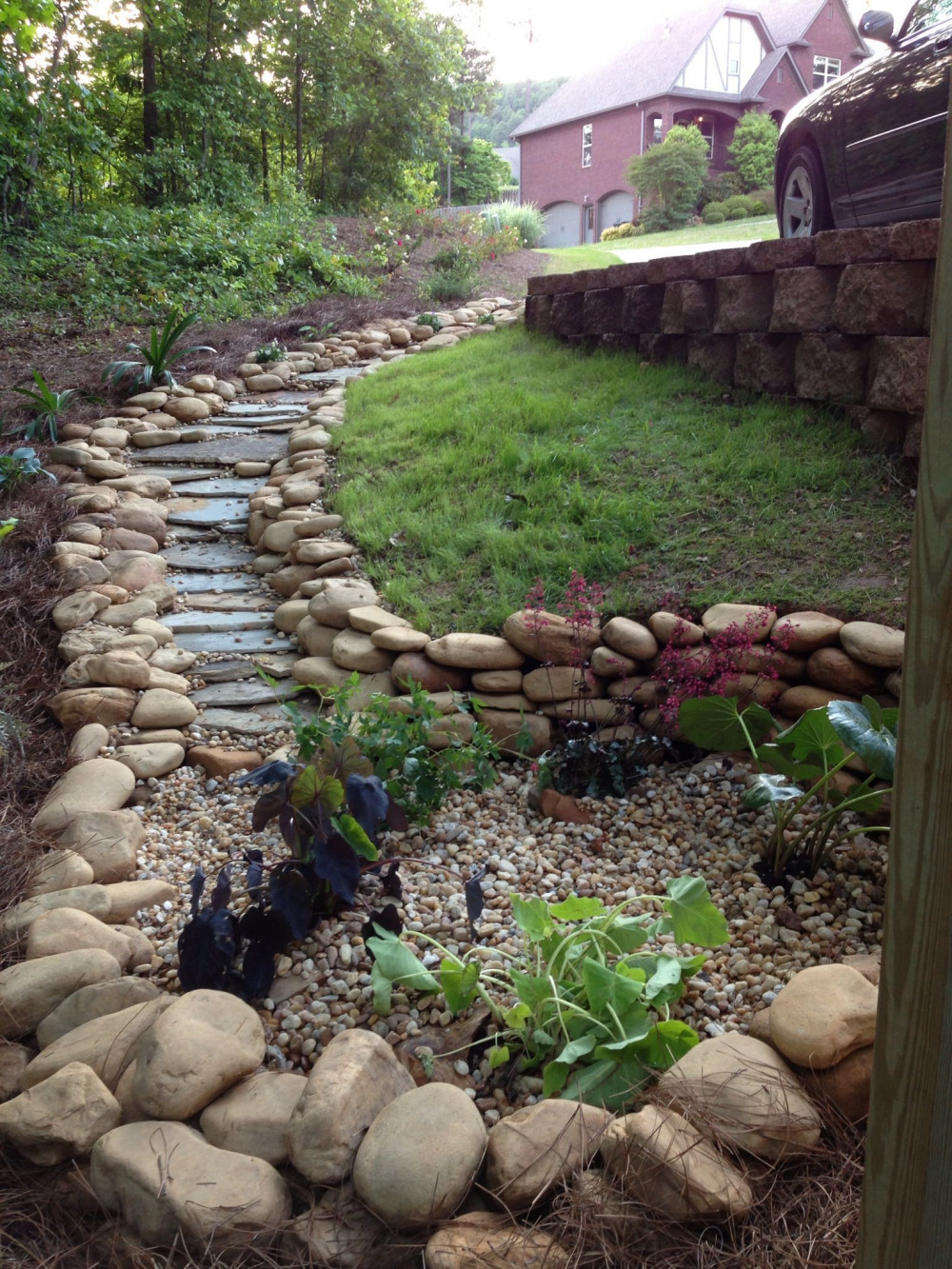 Source: Sawen Consultancy Services Pvt.Ltd.
Source: Sawen Consultancy Services Pvt.Ltd.
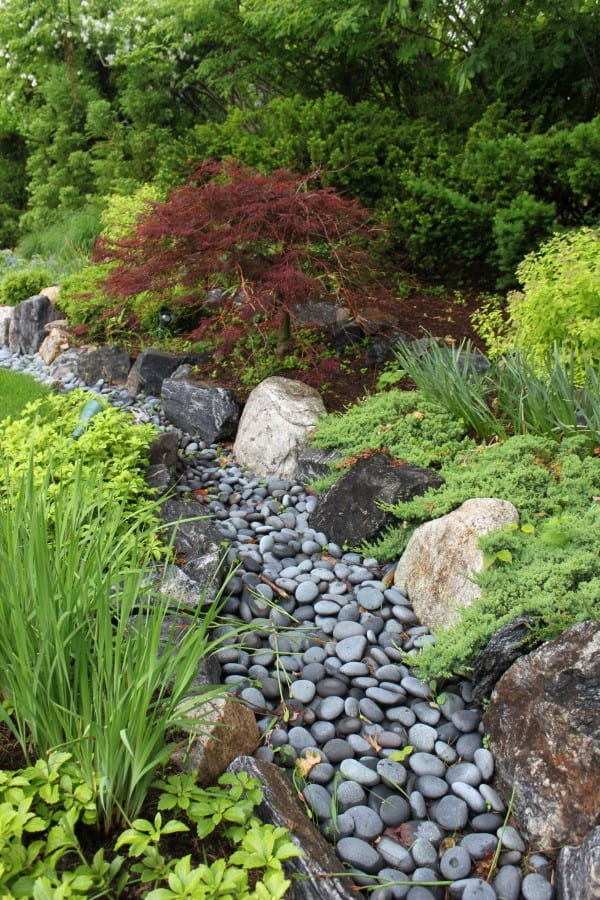 Source: A Nest With A Yard
Source: A Nest With A Yard
 Source: NORD. Architecture
Source: NORD. Architecture
Remember to exercise caution when working with heavy materials and equipment. Adjust the steps based on the size and complexity of your riverbed landscape project. Enjoy the process and let your creativity guide you!
